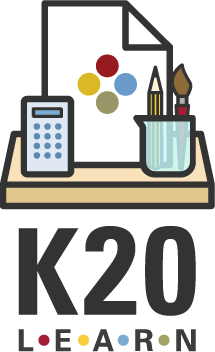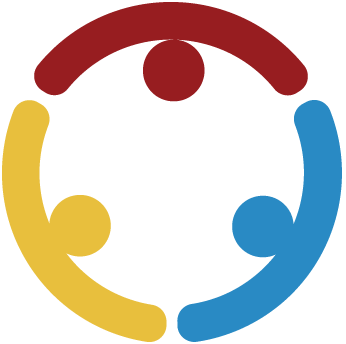Summary
Teachers find connections between the principles of authenticity and the Marzano elements of the Teacher Leader Effectiveness (TLE). This session does not address the other optional model known as the TULSA TLE Model.
Essential Questions
How can authenticity help teachers meet the requirements of the TLE?
How does authenticity framework and the Marzano framework connect to help student learning?
Materials List
Authentic Learning and Teaching Rubric
Marzano Strategies Card Sort mat (printed on legal size paper)
Marzano Element Card Sort strips
Marzano Element Hat Activity strips
Definitions of Some Instructional Strategies
Authenticity and Marzano's Content Feedback Protocol
Instruction Strategy Note Sheet
2014 Marzano Teacher Evaluation Model Learning Map
Post-It Notes
Learning Goals
Participants will be able to articulate how authenticity can help them meet the requirements of the TLE.
Participants will be able to identify specific classroom strategies to fit both the authenticity and Marzano Frameworks.
Participants will be able to identify specific connections between the authenticity Framework and the content elements of Marzano Domain 1: Classroom Strategies and Behaviors.
Engage
Welcome participants to the authenticity and the Marzano Model of Teacher Leader Effectiveness (TLE) Professional Development Session. Change to the strategy slide, "Fold the Line." Present the question, "How much do you know about Marzano and Teacher Leader Effectiveness?" Have participants use a Post-It Note and write down a number one through five, ranking their personal level of knowledge concerning the Marzano Protocol. One=no knowledge and Five = most knowledge. A participant at one doesn't know anything about Marzano, maybe they haven't even heard his name before. A participant at a five could tell you everything you need to know about Marzano and TLE.
Now once everyone has written down their rank, participants are going to make a straight line placing themselves in order from one to five.
Participants discuss the topic with one of the people standing next to them. This provides support for their stance. Once everyone is lined up one through five, the participants are going to split in half and fold the line. To fold the line, have the participant at one end of the line walk over to the other end. Participants follow the leader so that when they stop, each is across from a partner with a different number than their own. For example, the participant standing at the very end of the line as a five will walk down to the other end of the line and face the person at the beginning of the line so a five and one are now partners. However, participants that marked themselves as a three may be with another three. Once participants have their partners they may find a seat together. These sets of partners will work together for the exploration activity.
Inform participants that new instructional strategies will be introduced to them throughout the session like Fold the Line. These strategies are tools to support higher-order thinking in an authentic way. Encourage participants to use their "Instructional Strategy Note Sheet" to jot down ideas for how they would personalize the strategies for their specific classes. Once all the new strategies are modeled, the presentation will allow time to reflect on how to use the strategies.
Allow a moment for participants to jot down how they could use Fold the Line in their classrooms. Provide an opportunity for a few people to share out about what they wrote.
Show the "Session Objectives" slide and briefly highlight the objectives for the session. This will provide a road map of where you will go together during the session and will let participants know what to expect from the session.
Explore
Then change to the slide, "Marzano Art and Science of Teaching." Share this slide and briefly explain the classification of Domain 1: Classroom Strategies and Behaviors as a Learning Map for the 2014 Marzano Teacher Evaluation Model. Briefly mention how each section is important to consider when instructing students.
Change to the next slide, "Classroom Strategies and Behaviors." This slide highlights the big ideas, otherwise known as the Design Questions (DQ) for each of these three teaching elements; Routine Events, Content, and On the Spot in Domain 1. Click the slide to bring up the oval and tell participants, "While all of the DQ are important we are going to just focus today on the Content portion of Domain 1; Design Questions two, three and four. Because that is primarily where planning for classroom instruction occurs."
Change to the slide, "Making Connections." The list on the left shares the four components of authenticity and the list on the right references the three Design Questions from the previous slide.
Still on "Making Connections", click the slide to bring up the connection arrows. Say, "There are prior knowledge connections between these two frameworks within your partner groups. I want you to have the opportunity to explore possible connections in our work today."
Change to the next slide, "Marzano Strategies Card Sort." To the whole group, identify the "Marzano Strategies Card Sort Mat" and the slips of paper numbered six through 23. Give the following instructions, "Sort these 18 slips of paper (numbers six through 23) on the 'Marzano Strategies Card Sort Mat' where you think they best fit according to the information provided and your prior knowledge. For example, number six reads, 'Identifying Critical Information: The teacher identifies a lesson or part of a lesson as involving important information to which students should pay particular attention.' This might fit in a number of places on the mat, but I am going to place it with the Value Beyond School because student learning addresses a topic or problem that has implications beyond the lesson itself. Work with your partner to place all of the Marzano Elements where you think they best fit. We will discuss and compare placements in a few minutes."
Participants need to know there is not one correct answer. Some of these may be difficult to place, while others seem to fit in more than one component of authenticity.
Allow 10 minutes for Card Sort.
Explain
After 10 minutes, bring the whole group back together. Explain that you are going to have different groups share out the numbers they placed within the components of authenticity. Instruct the whole group to listen and identify similar examples they have placed in different component areas. Also, identify those placed in that same component area that were not shared out by the other groups (which strips did you place in that same component the other group did not?).
Ask for a volunteer to share out the numbers they placed in the blue section, Construction of Knowledge. After they have finished ask the question, "Did other groups have these numbers in different sections? Please just read the section and the number." Then ask the question, "Did any groups have other slips in the Construction of Knowledge that were not already said?" Have those groups share out quickly.
Then repeat this same process for all the other components of authenticity, each time asking the same two questions.
Wrap up by reminding the whole group that these elements of Marzano and authenticity do overlap and connect in multiple areas.
Extend
Change to the next slide, "Teaching and Learning Strategies." Place one set of the strips of paper from the "Marzano Elements Card Sort and Hat Activity" attachment into a hat or a bowl and mix them up. Go to a group and allow them to pull out one of the strips. Once each group has pulled out a Marzano element, instruct them to brainstorm some authentic strategies you might use to address this element. Allow about 20 to 30 seconds for disequilibrium, and then pass out the "Brief Definitions of Some Instructional Strategies" to everyone. Explain that this is a small list of instructional strategies from which they can choose one or more to help support the Marzano Element.
If participants are still struggling to find strategies that work for their element, pass out the "Authenticity and Marzano's Content Feedback Protocol." This page gives specific examples of instructional strategies that work for each element of Marzano.
When groups are finished, allow them to quickly share out the Marzano Element and the Instructional Strategy they chose to address or support their Element.
Using the "Instructional Strategy Note Sheet" take a moment to jot down the strategies that have been used in today's session. Specifically address the two columns on the sheet, "How can you use this? What is the authentic component(s)?"
Evaluate
Change to the next slide and present the question, "What is one element of Marzano that you feel more equipped to address authentically in your classroom?" Allow participants time to reflect on the question. Then use the Give Me Five instructional strategy. Take five volunteers to share their reflection. Keep track of volunteers by holding up their fist and counting to five on your fingers as participants share.Note that five is an arbitrary number. More or less reflections could be solicited from the group depending on the teacher’s intention, time, etc.A show of hands for similar reflections could be requested while participants share their thoughts. "How many others answered in this way? Tell me by a show of hands."
Follow-up Activities
Research Rationale
The Teacher Leader Effectiveness (TLE) evaluation was adopted in 2011 through the Oklahoma State Department of Education as a teacher evaluation tool. It was implemented in stages, and in the 2013 - 2014 school year it was fully being used to assess teachers in the classroom. The Qualitative portion of the TLE is 50% of the total teacher measure (The State of Oklahoma, 2016). According to the Oklahoma State Department of Education, 35% of this calculation is to measure the "Added Value of Student Growth." "Added Value" refers to the contributions the teacher and school made additionally to impact student achievement over time (McGee, 2007). Student Growth does not focus on one student individually for one assessment, but as continued growth throughout the progression of the year. There are two models that may be used for the TLE evaluation. One of these is the Marzano Teacher Evaluation Model. Marzano's model focuses on what the teacher does where as authentic teaching changes lessons and places the focus to what the student does during a lesson. However, when looking at both frameworks they overlap, and Marzano can fit directly with the higher-order thinking (HOT) of Authenticity. When teaching and designing Authentic lessons, even homework can stimulate high-order thinking skills for practicing basic skills of a lesson when designed with authenticity in mind. Authentic lessons are typically student focused engaging students in active learning. "Learning by doing is generally considered the most effective way to learn," (Educause Learning Initiative, 2007). Marzano Framework has Design Questions one through nine that address different aspects of the teaching process. The Design Questions two through four align with authentic teaching, and authentic teaching aligns with how research claims the human mind turns information into useful, transferable knowledge (Educause Learning Initiative, 2007).
Resources
Card Sorts Instructional Strategy. K20 Center. (n.d.). Card sorts. Instructional Strategies. Retrieved from https://learn.k20center.ou.edu/strategy/d9908066f654727934df7bf4f506976b
Fold the Line Instructional Strategy. K20 Center. (n.d.). Fold the line. Instructional Strategies. Retrieved from https://learn.k20center.ou.edu/strategy/d9908066f654727934df7bf4f5079658
Give Me Five Instructional Strategy. K20 Center. (n.d.). Give me five. Instructional Strategies. Retrieved from https://learn.k20center.ou.edu/strategy/d9908066f654727934df7bf4f506b3f9
Lombardi, M. M. (2007). Authentic learning for the 21st century: An overview. Educause learning initiative, 1(2007), 1-12.
Marzano, R. (2013). Art and Science of Teaching/Ask Yourself: Are students engaged. ASCD: Technology-Rich Learning.
Marzano, R. (2014). Marzano Teacher Evaluation Model. Learning Map. Retrieved from http://www.marzanocenter.com/
McGee, L. (2013). TLE Report to the Oklahoma State Department of Education: Implementation Update (Rep.).
Oklahoma State Department of Education. (n.d.). Retrieved August 22, 2016, from http://sde.ok.gov/sde/


